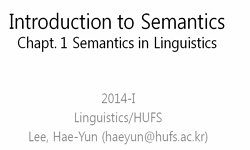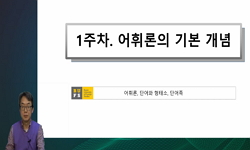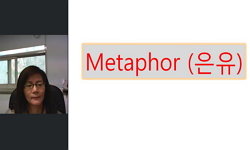비트겐슈타인의 철학에서 중요한 수수께끼 중 하나는 ‘의미체’(Bedeutungskorper)가 무엇이냐 하는 것이다. 이 글에서 나는 다음을 보이고자 한다. 『탐구』에서 단 한 번 언급된 ‘의미체’는...
http://chineseinput.net/에서 pinyin(병음)방식으로 중국어를 변환할 수 있습니다.
변환된 중국어를 복사하여 사용하시면 됩니다.
- 中文 을 입력하시려면 zhongwen을 입력하시고 space를누르시면됩니다.
- 北京 을 입력하시려면 beijing을 입력하시고 space를 누르시면 됩니다.
https://www.riss.kr/link?id=A100243731
- 저자
- 발행기관
- 학술지명
- 권호사항
-
발행연도
2014
-
작성언어
Korean
- 주제어
-
등재정보
KCI등재
-
자료형태
학술저널
-
수록면
131-165(35쪽)
-
KCI 피인용횟수
2
- DOI식별코드
- 제공처
-
0
상세조회 -
0
다운로드
부가정보
국문 초록 (Abstract)
비트겐슈타인의 철학에서 중요한 수수께끼 중 하나는 ‘의미체’(Bedeutungskorper)가 무엇이냐 하는 것이다. 이 글에서 나는 다음을 보이고자 한다. 『탐구』에서 단 한 번 언급된 ‘의미체’는 바로 『논고』에서 거론되는, 특히 논리적 상항의 ‘의미’이다. 이를 위하여 나는 다음과 같은 순서로 논의하고자 한다. 첫째, 우리는 먼저 비트겐슈타인이 실제로 ‘의미체’에 관하여 구체적으로 언급한 것을 살펴보아야 한다. 이러한 언급은 ?비트겐슈타인의 음성들에서 분명하게 제시되어 있는데, 우리는 이 언급에서 제시된 것을 ‘의미체 비유’라고 부를 수 있다. 둘째, ‘의미체 비유’에서 비트겐슈타인이 제시한 것이 과연 『논고』에 실제로 있는지 우리는 확인해야 한다. 여기에서 먼저 선행해서 해결되어야 하는 문제는 ‘∼’과 같은 논리적 상항이 의미(Bedeutung)를 갖는지 여부이다. 셋째, ‘의미체’와 관련된 생각이 전기 비트겐슈타인 자신의 것이라면, 이제 그의 의미이론이 후기 비트겐슈타인의 의미이론과 어떻게 연결되는지를 해명하는 것이 요구된다. 우리는 비트겐슈타인이 힐베르트와 바일의 형식주의라는 새로운 시각을 비판적으로 수용함으로써 (프레게의 생각을 수용한 결과 형성된) 의미체와 관련된 자신의 생각을 극복하였다는 것을 보게 될 것이다. 넷째, ‘의미체’와 관련된 생각이 실제로 비트겐슈타인 자신의 것이라면, 『논고』의 형성 과정에서 그러한 생각들을 확인할 수 있어야 할 것이다. 우리는 ‘의미체’ 문제가 비트겐슈타인에게는 『논고』의 집필을 포기하게 할 수 있었던 가장 심각한 문제 중의 하나였다는 것을 확인하게 될 것이다.
다국어 초록 (Multilingual Abstract)
One of the important puzzles concerning the philosophy of Wittgenstein is this: What is his “Bedeutungskorper” (meaning?body)? With regard to this problem, I will show in this paper that “meaning?body,” which is mentioned just once in the Inve...
One of the important puzzles concerning the philosophy of Wittgenstein is this: What is his “Bedeutungskorper” (meaning?body)? With regard to this problem, I will show in this paper that “meaning?body,” which is mentioned just once in the Investigations, is the “meaning” (Bedeutung) of the Tractatus, in particular, that of a logical constant. For this I will discuss in the sequence as follows. Firstly, we must take a look at the remarks that Wittgenstein adduced concretely. Those remarks are expressively given in The Voices of Wittgenstein, which we can call the “meaning?body simile.” Secondly, we must confirm that what Wittgenstein adduced in the “meaning?body simile” is embodied in the Tractatus. The problem which should be solved in advance is whether logical constants such as ‘∼’ have meanings (Bedeutungen). Thirdly, if the thoughts related with the “meaning?body” belong to early Wittgenstein, then we need to explicate how the early Wittgenstein’s theory of meaning is connected with the later Wittgenstein’s. We will confirm that Wittgenstein overcame the thoughts concerning Bedeutungskorper (which were the results that he had accepted the important basic idea of Frege’s theory of meaning) by partly accepting the new point of view of Hilbert’s formalism. Fourthly, if the thoughts concerning Bedeutungskorper are Wittgenstein’s, we must be able to confirm those thoughts in the prior development of the Tractatus. We will confirm that the “meaning?body” problem was one of the most serious problems for the early Wittgenstein that could lead to his abandoning the writing of the Tractatus.
목차 (Table of Contents)
- 【요약문】
- Ⅰ. 들어가는 말
- Ⅱ. 비트겐슈타인의 ‘의미체 비유’
- Ⅲ. 부정의 의미
- Ⅳ. 의미와 규칙
- 【요약문】
- Ⅰ. 들어가는 말
- Ⅱ. 비트겐슈타인의 ‘의미체 비유’
- Ⅲ. 부정의 의미
- Ⅳ. 의미와 규칙
- Ⅴ. 의미와 구문론적 사용앞에서
- Ⅵ. 규칙과 의미
- Ⅶ. 맺는 말
- 참고문헌
- ABSTRACT
참고문헌 (Reference)
1 이영철, "철학적 탐구" 책세상 2006
2 이기흥, "심리철학적 소견들 1권(Bemerkungen ueber die Philosophie der Psychologie 1)" 아카넷 2013
3 최원배, "산수의 기초" 아카넷 2003
4 비트겐슈타인, "논리-철학논고" 책세상 2006
5 박정일, "『논리-철학 논고』의 일반성 개념에 관하여" 한국논리학회 17 (17): 1-31, 2014
6 박정일, "『논리-철학 논고』의 ‘부정적 사실’에 관하여" 철학사상연구소 (51) : 173-200, 2014
7 Han, D., "Wittgenstein on Russell’s Theory of Logical Types" 38 : 115-146, 2013
8 Wittgenstein, L., "Wittgenstein and the Vienna Circle" Basil Blackwell 1979
9 Fogelin, R. J., "Wittgenstein" Routledge 1987
10 Wittgenstein, L., "The Voices of Wittgenstein" Routledge 2003
1 이영철, "철학적 탐구" 책세상 2006
2 이기흥, "심리철학적 소견들 1권(Bemerkungen ueber die Philosophie der Psychologie 1)" 아카넷 2013
3 최원배, "산수의 기초" 아카넷 2003
4 비트겐슈타인, "논리-철학논고" 책세상 2006
5 박정일, "『논리-철학 논고』의 일반성 개념에 관하여" 한국논리학회 17 (17): 1-31, 2014
6 박정일, "『논리-철학 논고』의 ‘부정적 사실’에 관하여" 철학사상연구소 (51) : 173-200, 2014
7 Han, D., "Wittgenstein on Russell’s Theory of Logical Types" 38 : 115-146, 2013
8 Wittgenstein, L., "Wittgenstein and the Vienna Circle" Basil Blackwell 1979
9 Fogelin, R. J., "Wittgenstein" Routledge 1987
10 Wittgenstein, L., "The Voices of Wittgenstein" Routledge 2003
11 Frege, G., "The Frege Reader" Blackwell Publishing 1997
12 Ramsey, F. P., "The Foundations of Mathematics and other Logical Essays" Routledge & Kegan Paul Ltd. 1931
13 Wittgenstein, L., "Tactatus Logico-Philosophicus" Routledge & Kegan Paul LTD 1922
14 Wittgenstein, L., "Philosophical Grammar" Basil Blackwell 1974
15 Copi, I. M., "Objects, Properties, and Relations in the Tractatus" (266) : 145-165, 1958
16 Wittgenstein, L., "Notebooks 1914-1916" Harper & Row, Publishers 1961
17 Frege, G., "Grundgesetze der Arithmetik Ⅱ" Verlag von Hermann Pohle 1903
18 Anscombe, G. E. M., "An Introduction to Wittgenstein’s Tractatus" Hutchinson University Library 1959
19 Glock, H., "A Wittgenstein Dictionary" Blackwell 1996
동일학술지(권/호) 다른 논문
-
- 서울대학교 철학사상연구소
- 방인(Bang, In)
- 2014
- KCI등재
-
앙리 베르그송의 ‘생명’ 개념에 대한 소은 박홍규의 분석
- 서울대학교 철학사상연구소
- 이정우(Lee, Jeong-Woo)
- 2014
- KCI등재
-
아리스토텔레스의 실체연구 중 생성 이론에 나타나는 형상 이해
- 서울대학교 철학사상연구소
- 권혁성(Kwon, Hyeock-Seong)
- 2014
- KCI등재
-
- 서울대학교 철학사상연구소
- 오근창(Oh, Keun-Chang)
- 2014
- KCI등재
분석정보
인용정보 인용지수 설명보기
학술지 이력
| 연월일 | 이력구분 | 이력상세 | 등재구분 |
|---|---|---|---|
| 2026 | 평가예정 | 재인증평가 신청대상 (재인증) | |
| 2020-01-01 | 평가 | 등재학술지 유지 (재인증) |  |
| 2017-01-01 | 평가 | 등재학술지 유지 (계속평가) |  |
| 2014-09-04 | 학술지명변경 | 외국어명 : 미등록 -> CHUL HAK SA SANG - Journal of Philosophical Ideas |  |
| 2013-01-01 | 평가 | 등재학술지 유지 (등재유지) |  |
| 2010-01-01 | 평가 | 등재학술지 유지 (등재유지) |  |
| 2008-01-01 | 평가 | 등재학술지 유지 (등재유지) |  |
| 2005-01-01 | 평가 | 등재학술지 선정 (등재후보2차) |  |
| 2004-01-01 | 평가 | 등재후보 1차 PASS (등재후보1차) |  |
| 2003-01-01 | 평가 | 등재후보학술지 선정 (신규평가) |  |
학술지 인용정보
| 기준연도 | WOS-KCI 통합IF(2년) | KCIF(2년) | KCIF(3년) |
|---|---|---|---|
| 2016 | 0.62 | 0.62 | 0.57 |
| KCIF(4년) | KCIF(5년) | 중심성지수(3년) | 즉시성지수 |
| 0.5 | 0.51 | 1.483 | 0.11 |




 DBpia
DBpia






